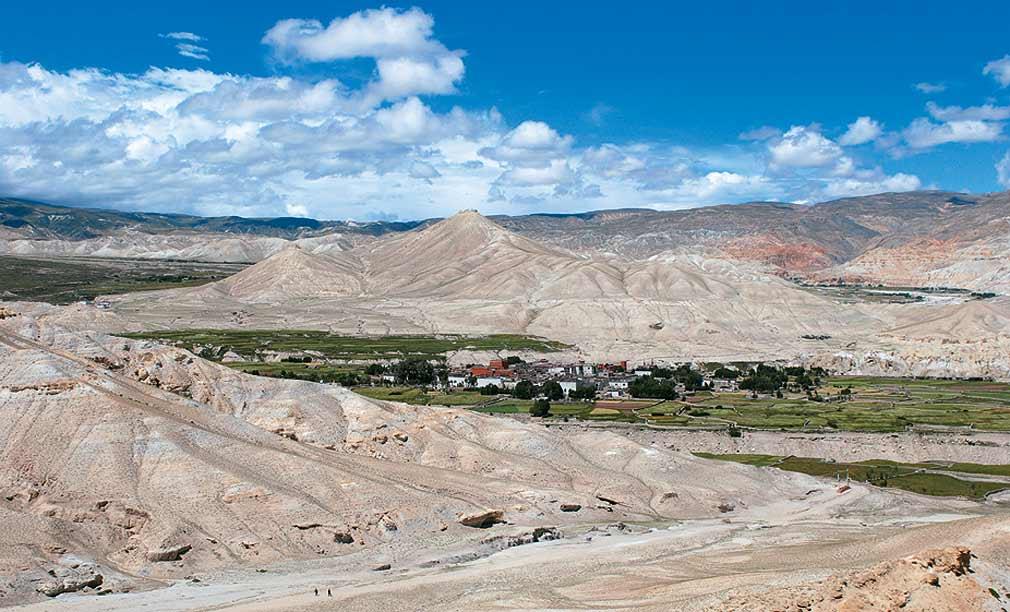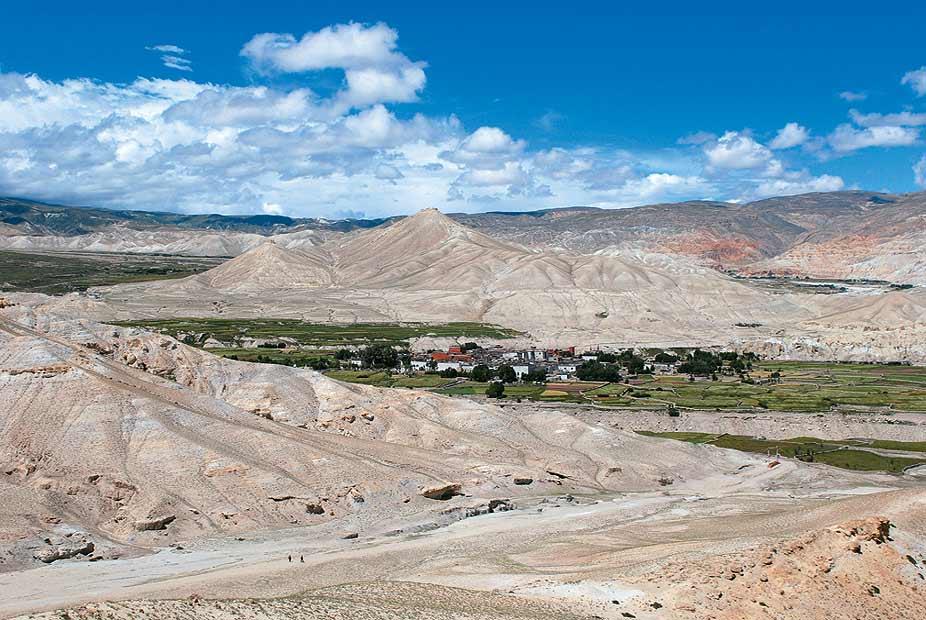
Strategically positioned on the trade route, the city of Lo Manthang became so wealthy that it needed to secure itself behind a 26ft-high wall punctuated by a series of 14 watchtowers. A single gate allowed access to the 180 houses within, which till a few years ago shut at dusk! The four-storey white building in the centre is the palace of King Jigme Parbal Bista, and the red boxes are the Champa, Tugchen, and Chyodi gompas. Tibet is just a few hours' walk away, over the Kore La (15,300ft).
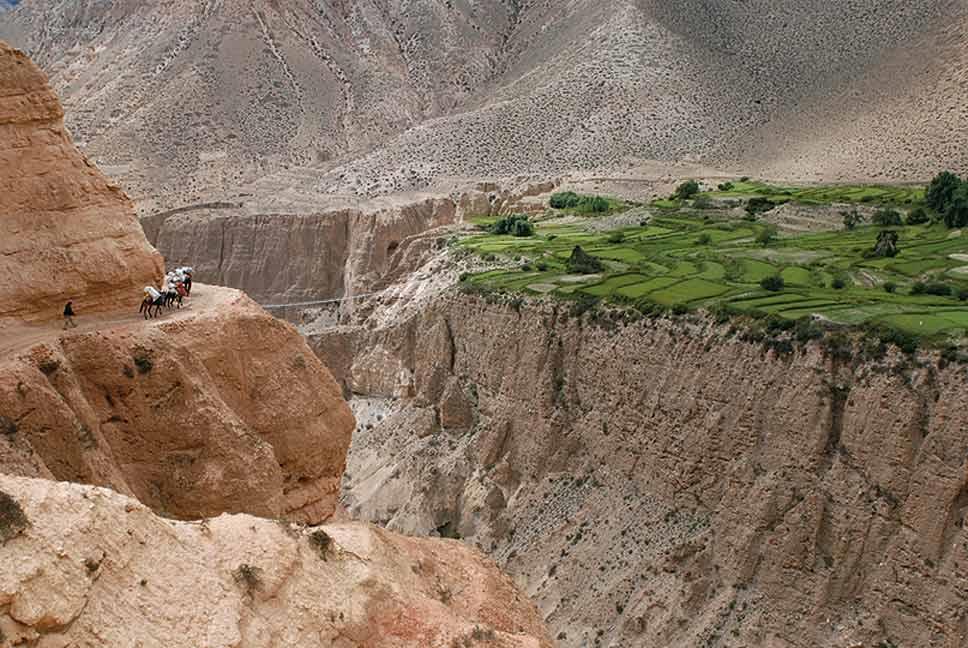
Green is a rare colour in this desolate and barren landscape. Wherever possible mountain streams have been diverted through manmade channels and brought long distances to where land can be terraced-resulting in a small oasis in this harsh land, around which small settlements have come up. Here a mule trail passes the barley and wheat fields of Gyakar.
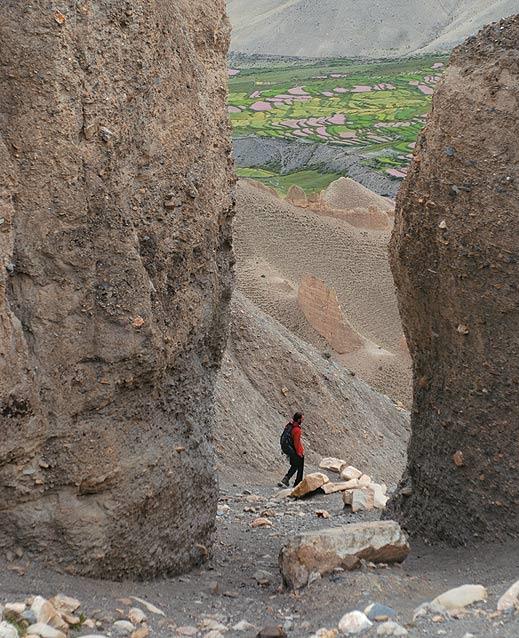
The trek is strenuous but not as a consequence of the altitude - which starts at about 9,500ft and touches only 13,500ft at the highest passes - but because the trail continually dips and climbs over the ridges, stretching out the days. Here a trekker makes a typical steep descent to Dhakmar on the return route.
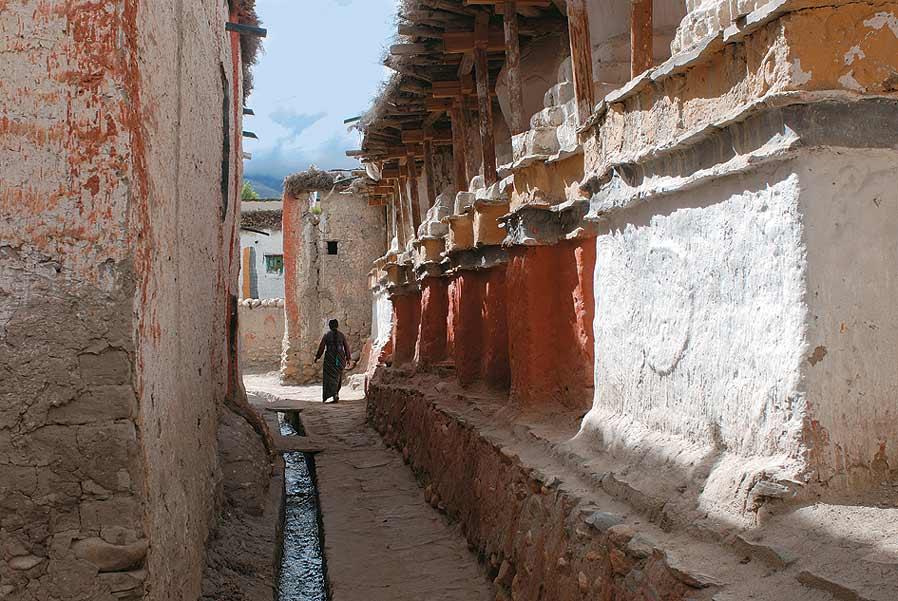
The more 'worldly' Sakyapa Buddhist sub-sect dominates here. All chortens, mani walls and monasteries in Mustang are marked with the Sakyapa colours: grey, ochre and white against blood-red walls; colours derived from and which echo the landscape. Here a woman walks past a row of chortens that abut the 15th-century Thupchen Gompa.
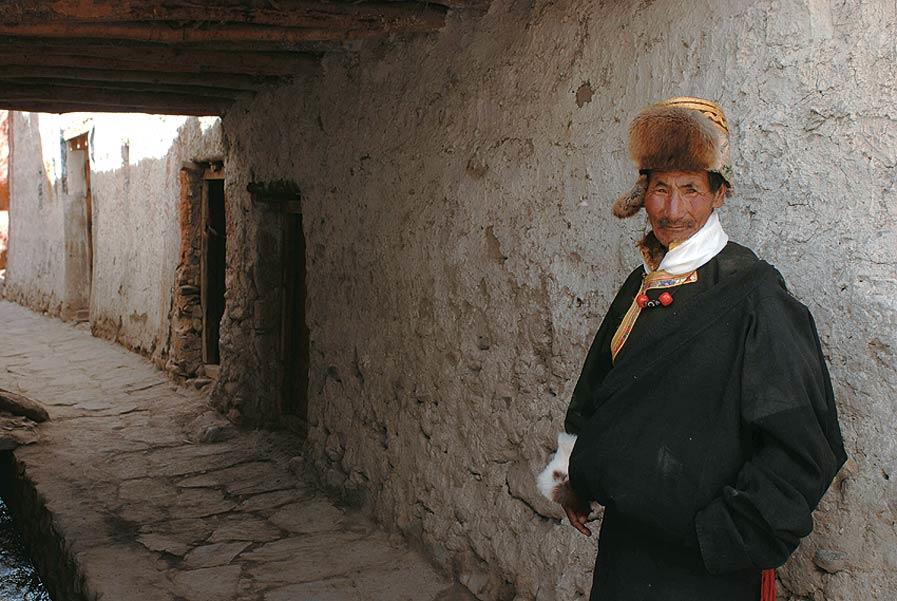
The Loba culture is largely Tibetan, but the community has not fully shaken off the Nepali-Hindu influences that resound in their backyard. They follow a caste hierarchy: only the upper-caste Gurung and the nobility (Bista), like the man in this picture, live inside Lo Manthang. The blacksmiths, musicians, butchers, etc live in settlements to the east of the city.
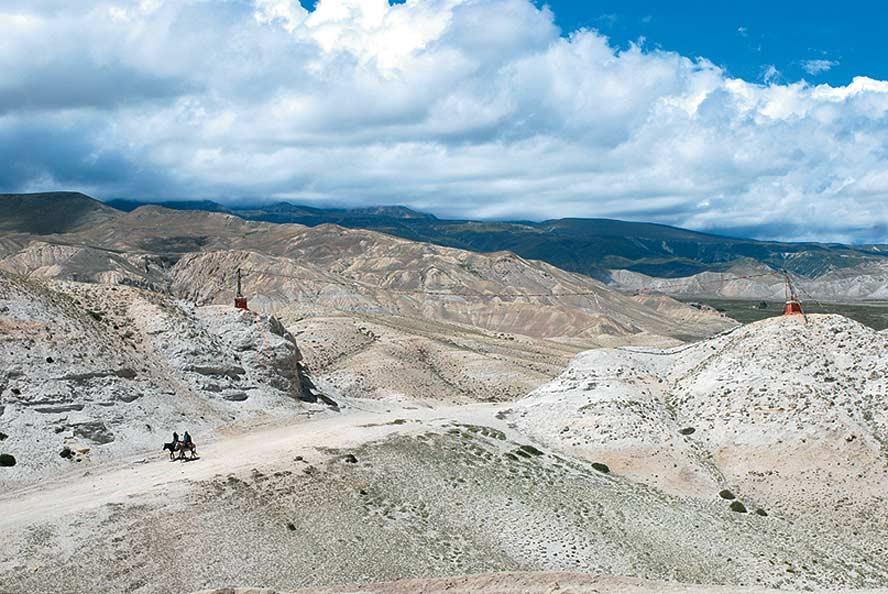
Horsemen cross the Lo La (13,500ft). They follow the same trade route to the south that once brought wool and salt from the Tibetan plateau and ran it down the Kali Gandaki. All that changed with the Chinese occupation of Tibet. But trader genes die hard: with the onset of winter, most of the population heads south towards warmer climes; some even to Ludhiana to buy sweaters in wholesale and then retail them in Varanasi!
Mustang
Nepal


